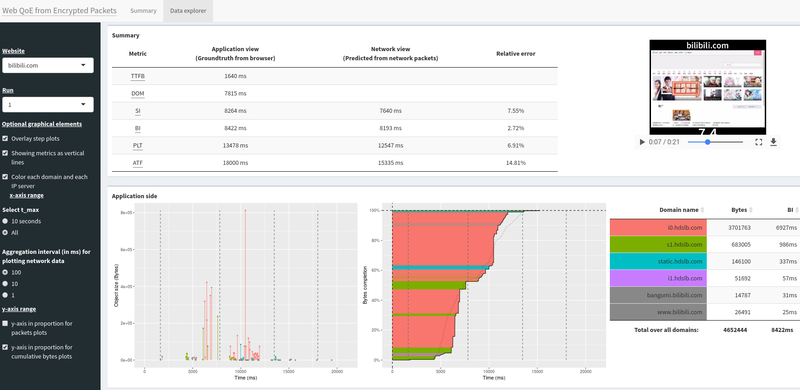Web QoE from Encrypted Network Traffic
Pervasive encryption makes it hard for ISPs to manage their network and to assess the quality of experience they are delivering to their customers. The case of the Web is particularly complex, with a plethora of recently proposed in-browser metrics that aim at capturing the page visual rendering quality (e.g. Above the Fold and SpeedIndex). The focus of this SIGCOMM-19 demo, is to showcase that such metrics can be estimated quite accurately just from streams of encrypted packets, using classic supervised learning techniques. Click on the image to interact with the demo, or read a more detailed evaluation in this Networking-20 paper and grab the associated dataset
Jupyter notebook
To reduce bootstrap time, reduce human error and increase repeatability of our experiments, we not only make dataset available, but also provide a (very simple) WebQoE-example.zip Jupyter notebook to start with the experiments we describe in the [PAM-18] and [QoMEX-18] papers.
Factorization machine demo
To get fundamental insights and explain the relationship between QoE and different observables, we resort to recommender systems such as Factorization Machines. Check out our interactive demo !
Chrome plugin
We have released the implementation of our approximated objective metrics as a Chrome plugin on GitHub and on the Chrome app store
The plugin is branded at mesuring the ATF metics, but actually does more than that – for the complete list of supported metrics, check the [PAM-18] paper or the datasets. To see what the plugin can do, also check the following video of the ACM SIGCOMM-18 demo.
